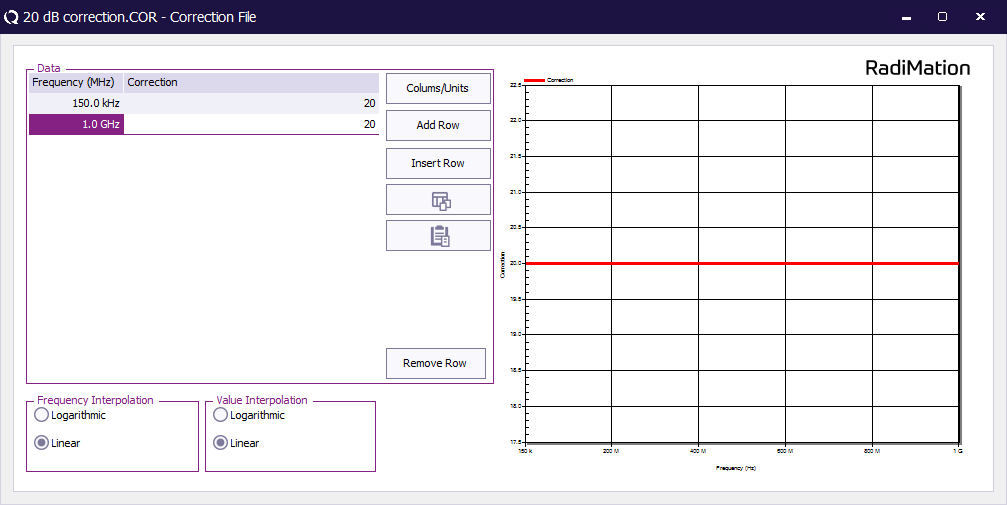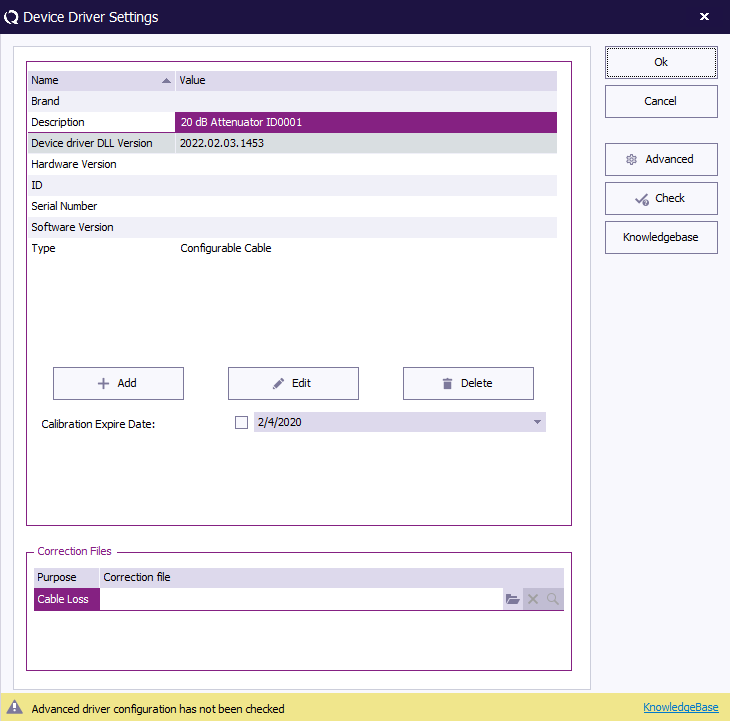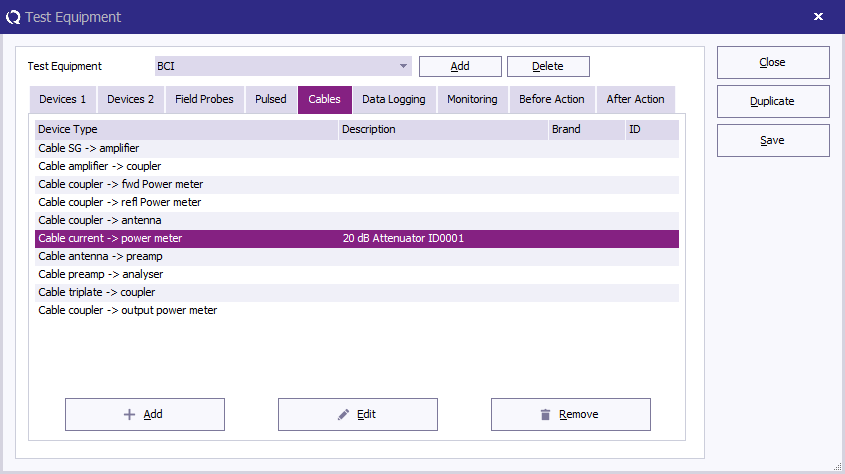Difference between revisions of "RadiMation Application Note 141"
(→Create a correction manually) |
(→Create a calibration file) |
||
| Line 31: | Line 31: | ||
{{Menu|File|Save correction as...}} | {{Menu|File|Save correction as...}} | ||
| − | It is also possible to paste data from for example Microsoft Excel with the | + | It is also possible to paste data from for example Microsoft Excel with the Paste button [[File:PasteButton.png]]. |
Make sure the data on the clipboard is specified in present in MHz and attenuation values expressed in dB. | Make sure the data on the clipboard is specified in present in MHz and attenuation values expressed in dB. | ||
Revision as of 13:43, 6 November 2023
How to create and apply a cable correction
This RadiMation® application note explains how to create a cable correction and how to select it in RadiMation®. Cable corrections can be used for several reasons:
- for cables in emission measurements
- when using attenuators in a conducted immunity calibration setup
- correcting a cable from a coupler to a powermeter in an immunity test.
By specifying the actual correction for the cable loss, RadiMation® will be showing the correct measurement values.
The procedure to determine and select a cable correction, consist of 3 steps:
- Create a calibration file.
- Create a Cable device driver and apply the correction file.
- Add the cable to the test equipment.
Create a calibration file
There are two methods to create a correction file:
Measure attenuation or gain
It is possible to use the attenuation gain measurement to automatically create a correction and measure the cable or attenuator with a signal generator and a power meter or spectrum analyser.
this is described here: Attenuation / Gain System Calibration
Create a correction manually
To create a correction file manually, first create a new correction file, using the menu:
The Insert row button can be used to add additional rows. The cells in the frequency and correction columns can be used to specify the correct frequencies and the corresponding attenuation values.
The correction file can be saved to disk, by selecting from the menu:
It is also possible to paste data from for example Microsoft Excel with the Paste button ![]() .
Make sure the data on the clipboard is specified in present in MHz and attenuation values expressed in dB.
.
Make sure the data on the clipboard is specified in present in MHz and attenuation values expressed in dB.
This feature is particularly used when correction values are supplied in a digital calibration certificate or is measured with other software.
Create a cable device driver
- Choose configurable cable and click 'New'
- Enter a description for the cable or attenuator
- Below at Correction files select the applicable correction file.
- Click "Ok" to close the window.
Add the cable to the test equipment
To apply the cable, open test equipment:
- At the pull down menu select the applicable test equipment, or if needed create a new one.
- Select the 5th tab called "Cables"
- Click the button "Add" and add the cable to the applicable path.


